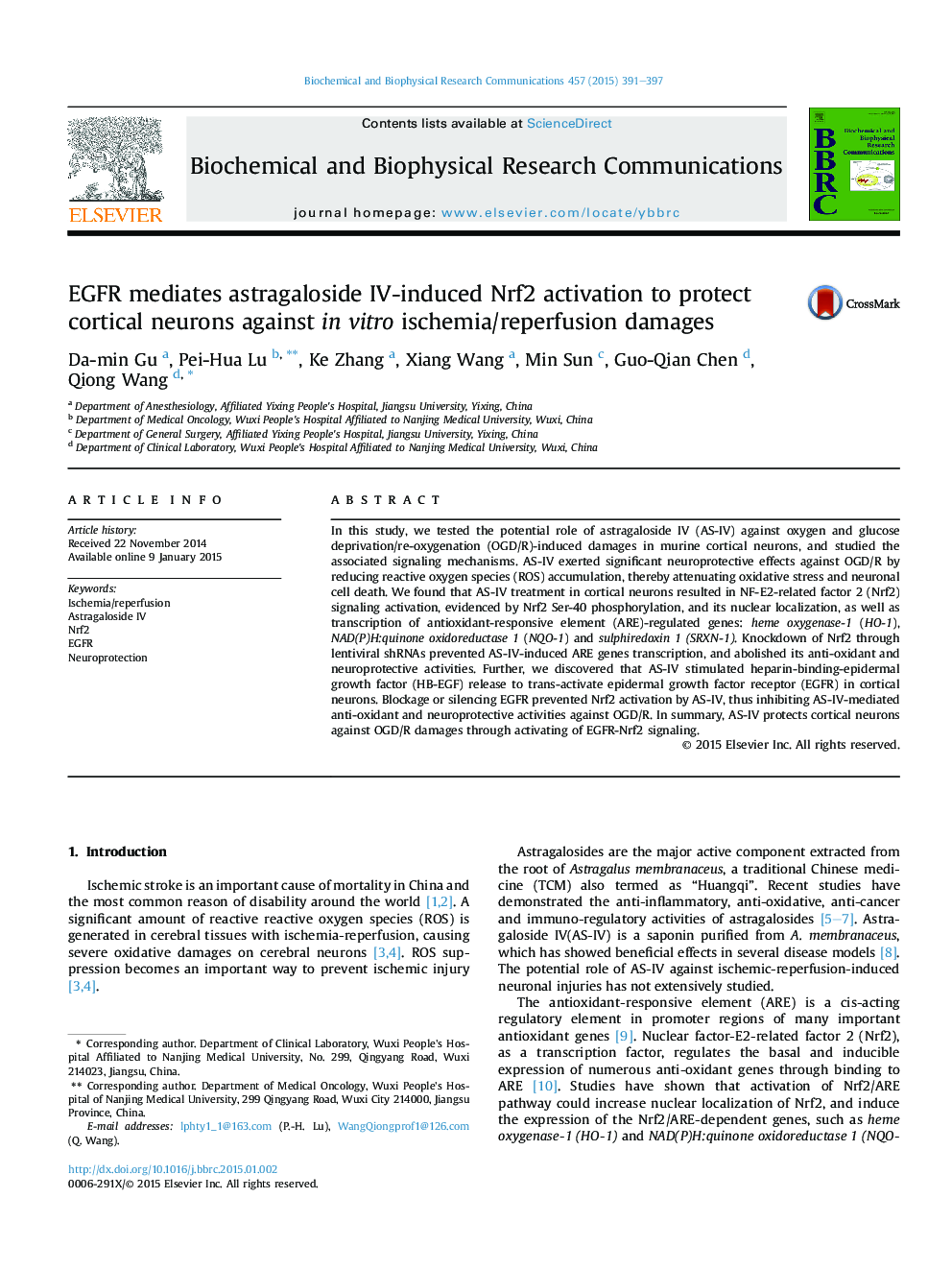| Article ID | Journal | Published Year | Pages | File Type |
|---|---|---|---|---|
| 10752912 | Biochemical and Biophysical Research Communications | 2015 | 7 Pages |
Abstract
In this study, we tested the potential role of astragaloside IV (AS-IV) against oxygen and glucose deprivation/re-oxygenation (OGD/R)-induced damages in murine cortical neurons, and studied the associated signaling mechanisms. AS-IV exerted significant neuroprotective effects against OGD/R by reducing reactive oxygen species (ROS) accumulation, thereby attenuating oxidative stress and neuronal cell death. We found that AS-IV treatment in cortical neurons resulted in NF-E2-related factor 2 (Nrf2) signaling activation, evidenced by Nrf2 Ser-40 phosphorylation, and its nuclear localization, as well as transcription of antioxidant-responsive element (ARE)-regulated genes: heme oxygenase-1 (HO-1), NAD(P)H:quinone oxidoreductase 1 (NQO-1) and sulphiredoxin 1 (SRXN-1). Knockdown of Nrf2 through lentiviral shRNAs prevented AS-IV-induced ARE genes transcription, and abolished its anti-oxidant and neuroprotective activities. Further, we discovered that AS-IV stimulated heparin-binding-epidermal growth factor (HB-EGF) release to trans-activate epidermal growth factor receptor (EGFR) in cortical neurons. Blockage or silencing EGFR prevented Nrf2 activation by AS-IV, thus inhibiting AS-IV-mediated anti-oxidant and neuroprotective activities against OGD/R. In summary, AS-IV protects cortical neurons against OGD/R damages through activating of EGFR-Nrf2 signaling.
Related Topics
Life Sciences
Biochemistry, Genetics and Molecular Biology
Biochemistry
Authors
Da-min Gu, Pei-Hua Lu, Ke Zhang, Xiang Wang, Min Sun, Guo-Qian Chen, Qiong Wang,
